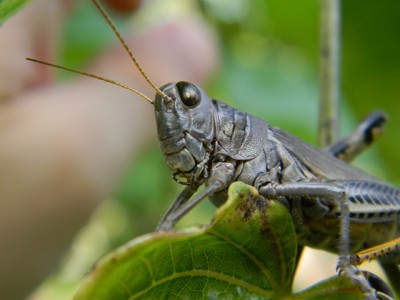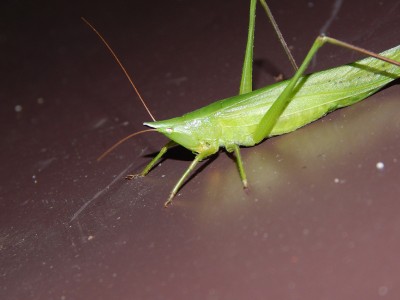“To go in the dark with a light is to know the light. To know the dark, go dark. Go without sight, and find that the dark, too, blooms and sings, and is traveled by dark feet and dark wings.”
– Wendell Berry

As we approach the end of summer we can feel the temperatures change and see darkness begin to set in earlier and earlier each evening. Although this might be disappointing to us, it is great for our local wildlife. About ninety percent of Pennsylvania’s mammals are nocturnal or crepuscular, meaning they are active in low light: the dawn and dusk hours. These animals are certainly enjoying the changing of the seasons. With these changes comes a fluster of activity, and this time of year is perfect for hearing a cacophony of living creatures that we do not get a chance to hear all year round.
Nocturnal creatures are much different than the diurnal creatures we get to see during the day. They have many adaptations to help them thrive during the darkest hours. Deer, for example, have cupped, pointy ears to help them collect sound. These ears are on top of their head so they can swivel and listen all around them, helping to keep them safe. Some animals, such as owls, have very good eyesight to help them see in the dark; however, a more common adaptation is color blindness.

Your eyes contain rods and cones, both of which help you see. Rods see shapes and movement, while cones see color. The cones need light to be able to see color, so since these animals are awake when there is very little to no light, they use mainly rods. To see this in action, you can head outside one evening when there is barely enough light to see, and hold your arm out straight with only your thumb up. Close one of your eyes and stare at the thumb without moving. It should start to disappear! However, once you move your thumb again, it returns to your vision right away. This is because your rods detect movement, and since there isn’t enough light to see the color of your hand, the cones are really of no use.
There are more creatures about than birds and mammals though. August is a wonderful time to listen for the symphony of insects, which come to life as night begins to fall. Up in the canopy you can hear the familiar Katydid, playing three short notes. In the bushes you can hear the coneheads (also Katydids, actually, but with cone-shaped heads), with their long song of a rapid, rhythmic, chirping sound. These insects are not singing to us, but rather playing. They make their songs using stridulation, which is defined as rubbing body parts together to create sounds.

Next time you want to take a stroll through the woods, think about waiting a few hours. Changing up the time of day you explore could lead to some great new discoveries. You never know what the night can hold.
With photos by Jerod Skebo.
